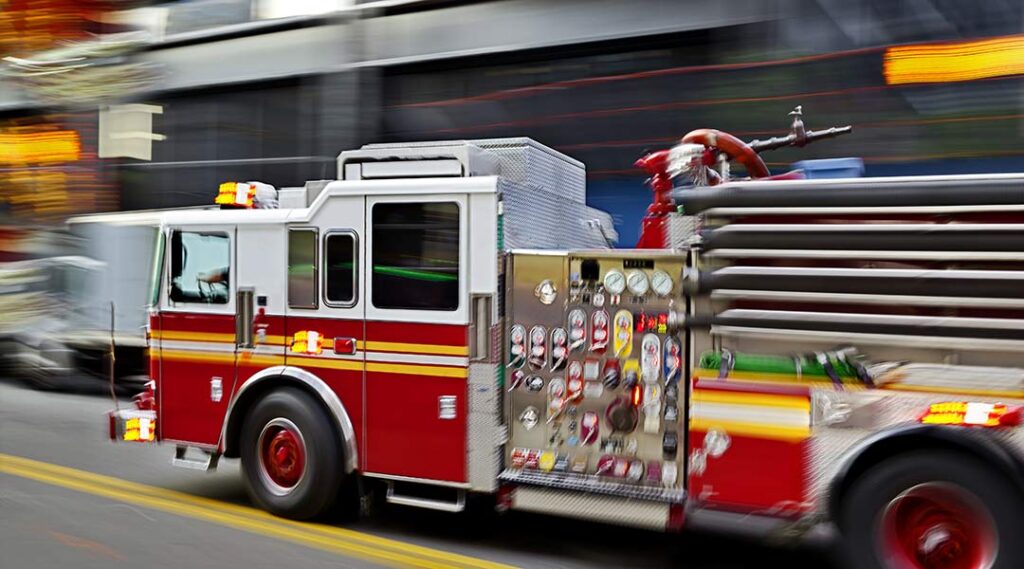This post was originally published on www.progressive.com
Rules for pulling over for emergency vehicles
Driving laws require you to pull over and allow emergency vehicles to pass you. However, there are some exceptions to this rule. For example, you’re not allowed to break the law to pull out of the way. Additionally, you shouldn’t put yourself or other drivers in danger while attempting to pull over. And you don’t have to stop if you’re driving in the opposite direction on a divided highway.
What should you do when an emergency vehicle is approaching?
Learning how to yield to emergency vehicles is a necessary skill. When an emergency vehicle is approaching you, the National Highway Traffic Safety Administration (NHTSA) recommends following their “SIREN” method.
- S Stay alert. The NHTSA recommends keeping the noise level in your car down far enough that you’ll hear sirens of emergency vehicles when they approach. Also, be aware that more than one emergency vehicle could be nearby.
- I Investigate. Use your mirrors to determine what you can do to pull over and how quickly you need to do it.
- R React. Move calmly and as quickly as you can to safely and smoothly pull over to the side of the road. Always use your turn signal, and don’t slam on your brakes.
- E Enter. Before re-entering the flow of traffic, look around carefully and use your turn signal when you do.
- N Never. Don’t pull over if you can’t do so safely or without breaking the law, and don’t try to outrun an emergency vehicle or follow it too closely.
These rules always apply when the emergency vehicle is on your side of the road and approaching from behind. Suppose the emergency vehicle is coming toward you on the opposite side of the road. In that case, you’ll still follow these guidelines unless there’s a physical barrier dividing the two sides of the road.
Are there exceptions for yielding to emergency vehicles?
Any pulling over for emergency vehicles law comes with an understanding that circumstances may not allow you to pull over and stop. For example, an emergency vehicle on a highway may approach so fast that there’s no time to pull over and stop. If you’re in traffic, it may be difficult or impossible to pull off the road. In that case, moving as far to the right as safely possible along with the rest of the traffic may be the only thing you can do under the circumstances.
Or if you’re wondering what to do if an emergency vehicle is behind you at a red light, you may not be able to do much more than move a little forward and to your right. But you can’t break the law to get out of the way, so don’t go through the intersection against a red light to make way for an emergency vehicle.
Do you have to pull over for emergency vehicles on a divided highway?
A divided highway means there’s a physical barrier — like a fence, a wall, or a grassy or forested median — that separates traffic running in opposing directions. If you’re on the opposite side of the divided highway from the emergency vehicle, you don’t need to slow down or stop for it.
What’s the difference between “pull over” and “move over” laws?
“Pull over” laws deal with emergency vehicles in motion. “Move over” laws deal with avoiding parked emergency vehicles. There’s not much difference in the move over laws by state. They generally have two requirements.
- As you approach an emergency vehicle on the side of the road, move over one lane to the left if you can safely do so. Moving over gives the vehicle and personnel more room to do their jobs safely.
- If you can’t move over, you must slow down to a reasonable speed, accounting for the existing driving conditions and safety of the emergency personnel you’re passing.
Check with your state’s Department of Motor Vehicles (DMV) to learn the specifics of their move over laws. Violations of pull over and move over laws can be punishable by fines or jail time, can negatively affect your driving record, or lead to an increase in your car insurance rates, among other penalties.
Other rules about driving around emergency vehicles
All states have laws about how closely you can follow a moving emergency vehicle while it’s using its lights and siren. But the allowed following distances vary by state. Additionally, you’re never allowed to pass a moving emergency vehicle while it’s using its lights and siren. You may be allowed to pass one if it’s parked and the emergency personnel directing traffic are waving you past the parked vehicle.
[ad_1]
